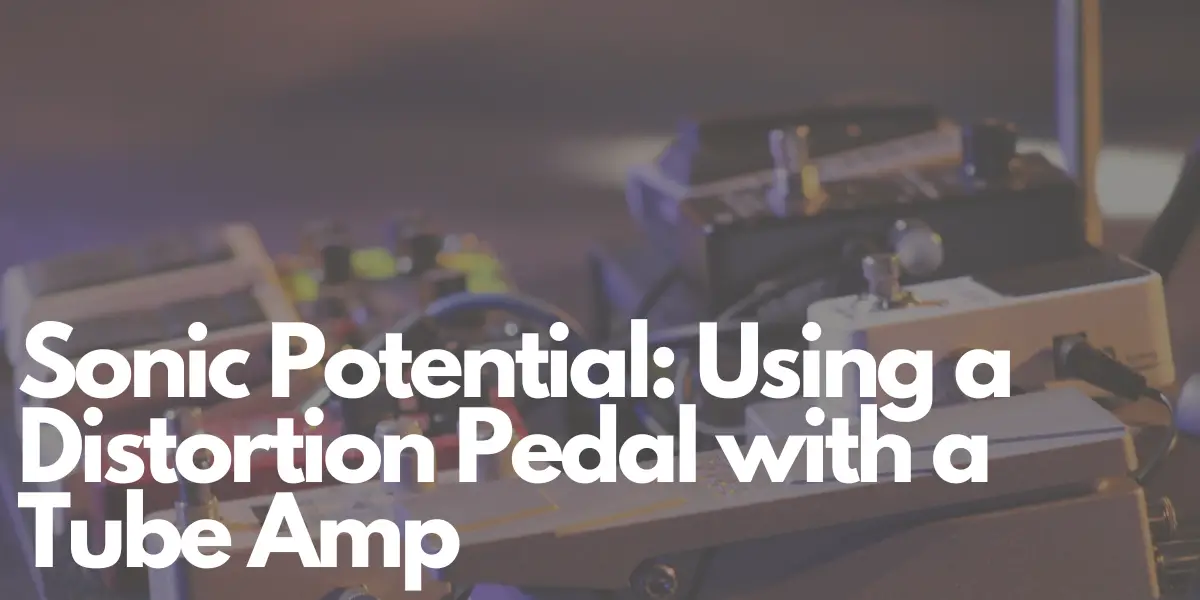Distortion pedals have long been a staple in the arsenal of guitarists, and their compatibility with tube amplifiers is a topic that often sparks curiosity. The short answer is, yes, you can use a distortion pedal with a tube amp. In fact, it’s a widely adopted practice among guitarists, with many swearing by the harmonious marriage of these two elements. In this article, we’ll delve into the world of distortion pedals and tube amps, exploring how they work together to create an array of captivating sounds.
The Perfect Pairing: Distortion Pedals and Tube Amps
Tube amps are renowned for their warm and natural sound, characterized by rich harmonics and smooth saturation. Adding a distortion pedal to the mix can elevate your tone to new heights. Whether you’re a fan of rock, metal, or blues, a distortion pedal can provide the extra gain and sustain needed to achieve that desired crunch and bite.
Key Considerations When Using Distortion Pedals with Tube Amps
Before you dive into the world of distorted bliss, there are a few crucial aspects to keep in mind:
1. Choose the Right Pedal
With a plethora of distortion pedals on the market, selecting the right one is paramount. Ensure compatibility with your tube amp and select a pedal that aligns with your desired sound. Popular options include the Ibanez Tube Screamer, Boss DS-1, and MXR Distortion+.
2. Start with Low Gain Settings
Upon plugging in your distortion pedal, begin with the gain setting set low. This initial step allows you to gauge how the pedal interacts with your amp and guitar. Once you establish a baseline tone, you can gradually experiment with higher gain settings.
3. Utilize EQ Controls
Both your tube amp and distortion pedal come equipped with EQ controls that let you shape your tone. Play around with these controls to tailor your sound. Boosting treble frequencies can provide a brighter tone, while cutting bass frequencies can create a tighter sound.
4. Experiment with Placement
Distortion pedals can be placed before or after your amp’s preamp section, and each option offers distinct advantages. Placing the pedal before the preamp increases sustain and gain, while positioning it after the preamp grants you more control over your tone.
Additional Tips for a Seamless Experience
To ensure a seamless experience when using distortion pedals with your tube amp, here are a few additional tips:
- Invest in a Quality Guitar Cable: High-quality guitar cables help preserve your tone and minimize unwanted noise.
- Maintain Your Guitar: Regular maintenance, such as tuning and cleaning your strings, ensures your guitar sounds its best.
- Embrace Creativity: The beauty of using distortion pedals lies in their versatility. There are no strict rules, so feel free to experiment with various settings and pedal placements until you find the sound that resonates with you.
Unlocking Different Sounds with Distortion Pedals and Tube Amps
The magic of this combination lies in its ability to produce a wide range of sounds. Here are some examples:
- Classic Rock Sound: Opt for a low to medium gain distortion pedal with the EQ set to boost treble frequencies for that classic rock crunch.
- Metal Sound: A high-gain distortion pedal with boosted treble and mid frequencies is ideal for achieving the heavy, aggressive tones of metal.
- Blues Sound: To capture the soulful tones of blues, go for a low gain distortion pedal and enhance the mid frequencies for that expressive, heartfelt sound.
Conclusion
In the world of guitarists, the union of distortion pedals and tube amps is a match made in heaven. It allows for endless sonic exploration and creativity, ultimately leading you to discover your unique signature sound. So, go ahead, experiment, and have fun – there are no boundaries when it comes to using distortion pedals with tube amps. Unleash your inner guitar virtuoso and embark on a musical journey like no other!
Author: Mike P
Hi! My name is Mike! I’ve been an apartment producer/musician for 10+ years. I’ve played in punk bands, released EDM tunes on Beatport and iTunes, and have a semi-successful stock music portfolio. Read more…



